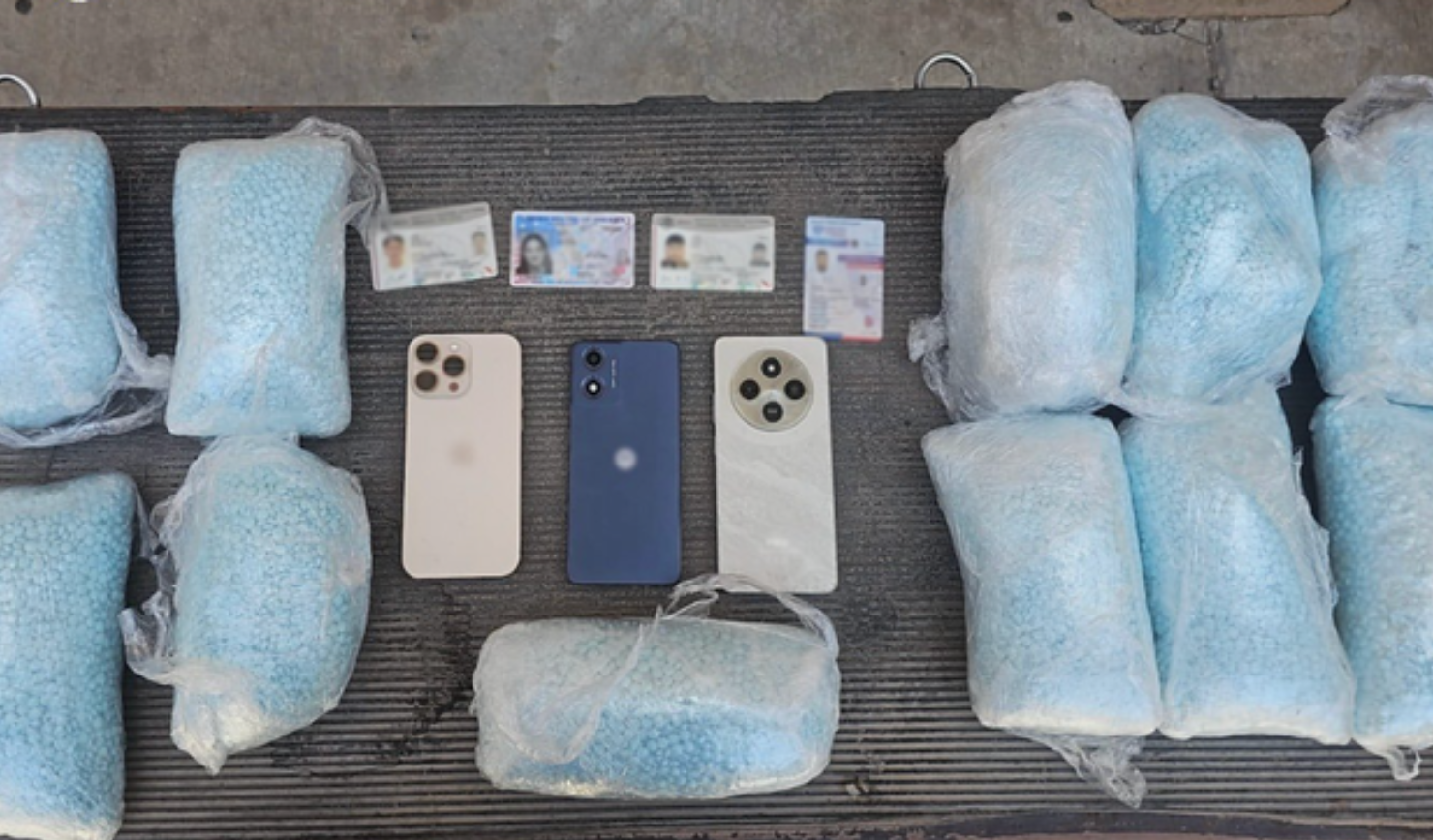

preCharge News WASHINGTON D.C. — Senior Pentagon officials revealed new details about the U.S. operation to bomb three nuclear sites in Iran, with the chairman of the Joint Chiefs of Staff saying it was the “largest B-2 operational strike in U.S. history” and inflicted “extremely severe damage and destruction” to the targets.
A Highly Classified Mission: Operation Midnight Hammer
“This was a highly classified mission with very few people in Washington knowing the timing or nature of this plan,” Gen. Dan Caine, the chairman, said in a briefing at the Pentagon on Sunday morning detailing the strikes against the Iranian nuclear sites at Fordo, Natanz and Isfahan.
Caine said the mission, dubbed Operation Midnight Hammer, included seven B-2 Spirit bombers that flew east from Whiteman Air Force Base in Missouri to Iran. Another group of B-2s flew west over the Pacific to act as decoys — news reports emerged over the course of the day Saturday that a group of the bombers were headed to the U.S. base in Guam.
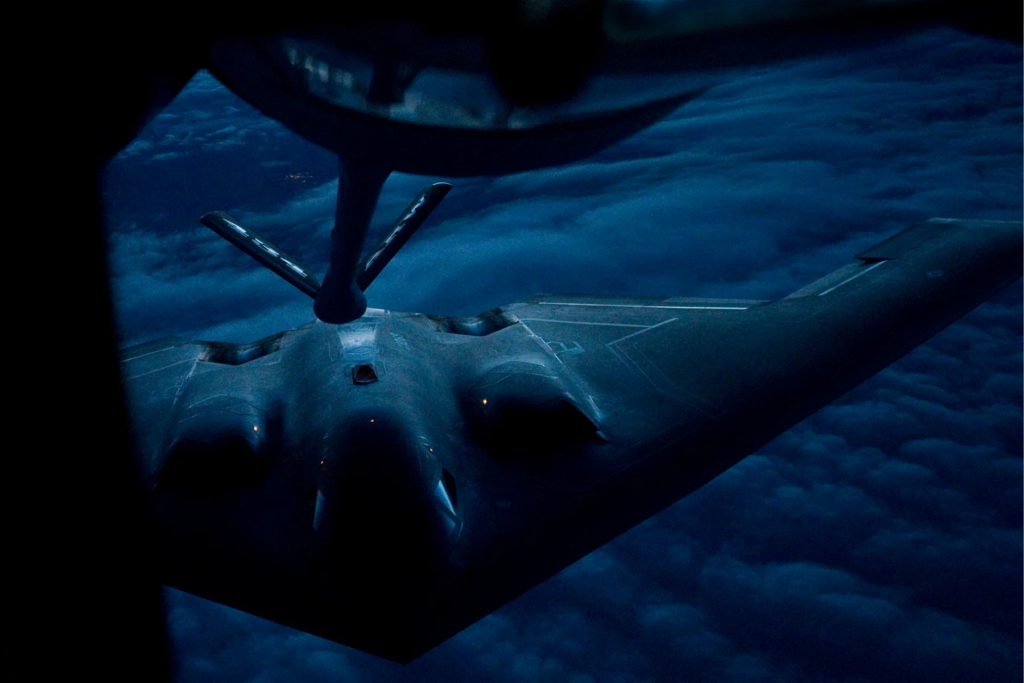
Complex Coordination and In-Flight Refueling
Meanwhile, the 18-hour flight east by the bombers that would drop payloads on Iran required multiple in-flight refuelings as the planes crossed the Atlantic and the Mediterranean. The bombers met up with U.S. fighter jets and support aircraft once over land in the Middle East, executing a “complex, tightly timed maneuver,” Caine said.
Mapping the Strike: Iran Targets and Flight Path
Map shows Iran targets, Operation Midnight Hammer flight path
Caine spoke in front of a map showing the flight path of the aircraft, and the timeline of key events in the operation:
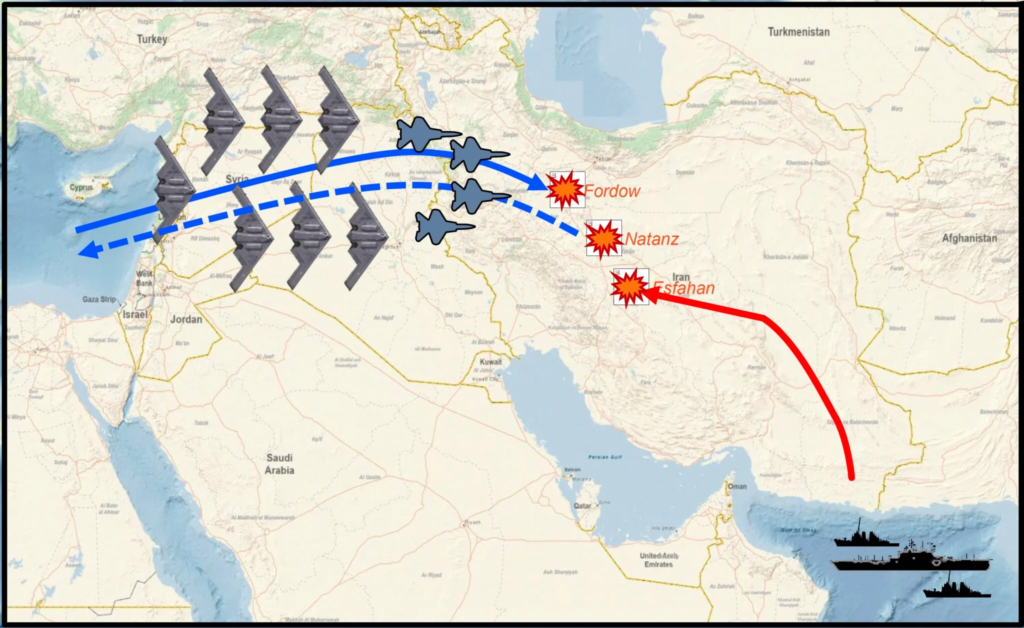
Tomahawk Missiles and Bunker-Buster Bombs Devastate Iranian Sites
At about 5 p.m. ET Saturday, just before the aircraft entered Iranian airspace, a U.S. submarine launched more than two dozen Tomahawk cruise missiles against targets at the site in Isfahan. As the bombers approached their targets, the U.S. deployed “several deception tactics, including decoys,” and fighter jets cleared the airspace ahead of them, checking for enemy aircraft and surface-to-air missiles.
Successful Air Penetration with No Opposition

“We are currently unaware of any shots fired at the U.S. strike package on the way in,” Caine said.
At about 6:40 p.m. ET, or 2:10 a.m. in Iran, the lead B-2 dropped two bunker-buster bombs known as the GBU-57 Massive Ordnance Penetrators (MOPs) on the site at Fordo. Over the next 25 minutes, Caine said, a total of 14 MOPs would be dropped on targets at Fordo and Natanz. The Tomahawk missiles landed at Isfahan after bombs were dropped on the two other sites. Caine said no shots were fired at the planes as they left Iranian airspace.
“Iran’s fighters did not fly, and it appears that Iran’s surface-to-air missile systems did not see us. Throughout the mission, we retained the element of surprise,” Caine said.
A Massive Joint Air Operation

“More than 125 U.S. aircraft participated in this mission,” Caine said, including the B-2 bombers, fighter jets, refueling planes, and surveillance aircraft. More than 75 precision-guided weapons were used in the attack, Caine noted.
“Initial battle damage assessments indicate that all three sites sustained extremely severe damage and destruction,” Caine said, noting that a full assessment will take time.
U.S. Warns Iran Against Retaliation
The chairman warned Iran against taking any retaliatory action for the strikes.
“Our forces remain on high alert and are fully postured to respond to any Iranian retaliation or proxy attacks, which would be an incredibly poor choice,” Caine said. “We will defend ourselves.”
Defense Leaders Praise the Success of the Mission
Defense Secretary Pete Hegseth called the attack “an incredible and overwhelming success.”
“The order we received from our commander in chief was focused, it was powerful, and it was clear,” Hegseth said at the briefing alongside Caine. “We devastated the Iranian nuclear program, but it’s worth noting that the operation did not target Iranian troops or the Iranian people.”
Strategic Impact on U.S. Military Deterrence
He added: “The operation President Trump planned was bold, and it was brilliant, showing the world that American deterrence is back. When this president speaks, the world should listen.”
“Our B-2s went in and out … and back without the world knowing at all,” Hegseth said. “In that way it was historic. A strike that included the longest B-2 Spirit bomber mission since 2001, and the first operational employment of the MOP, a Massive Ordnance Penetrator.”

Trump Declares “Spectacular Military Success”
Mr. Trump announced Saturday evening that the U.S. had launched strikes against Iran. He said in a national address later Saturday night that the sites “have been completely and totally obliterated.”
U.S. President Issues Stern Warning to Iran
Flanked by Hegseth, Secretary of State Marco Rubio and Vice President JD Vance at the White House, the president described the strikes as a “spectacular military success” and warned of “far greater” attacks if Iran does not “make peace.”
“If peace does not come quickly, we will go after those other targets with precision, speed and skill, most of them can be taken out in a matter of minutes,” he said. “There’s no military in the world that could have done what we did tonight, not even close. There has never been a military that could do what took place just a little while ago.”
Final Decision Came Hours Before Strike
Mr. Trump made his final decision to strike Iranian nuclear sites on Saturday aboard M1 during a call with Hegseth. The defense secretary advised Mr. Trump it was time to strike or abort the mission, after which the president gave the green light, according to a White House official.
The Wall Street Journal first reported the timing of Mr. Trump’s decision.
Mr. Trump was already leaning toward approving the strikes on Thursday, when White House press secretary Karoline Leavitt said he would decide “within two weeks,” the official said.
Iran Nuclear Deal Stalled
According to the official, Steve Witkoff, the special envoy to the Middle East, had told Mr. Trump in the weeks leading up to the strike that the Iranians were not serious about a nuclear deal.
Satellite photos show impact of strikes on Fordo
Satellite images from Maxar Technologies, taken Sunday after the strikes, show damage to the mountainside where the underground nuclear site at Fordo is buried about 300 feet down. They can be compared to images of the same location taken before the strikes.

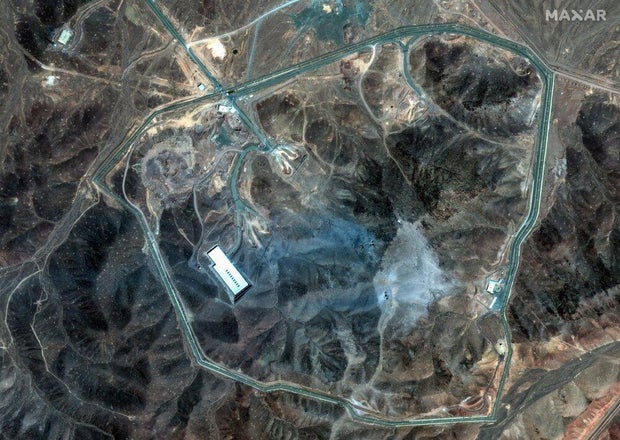
A layer of ash caused by the airstrikes can be seen across a large swath of the area.
The images by Maxar show several large diameter holes or craters on the top of the ridge over the underground complex.
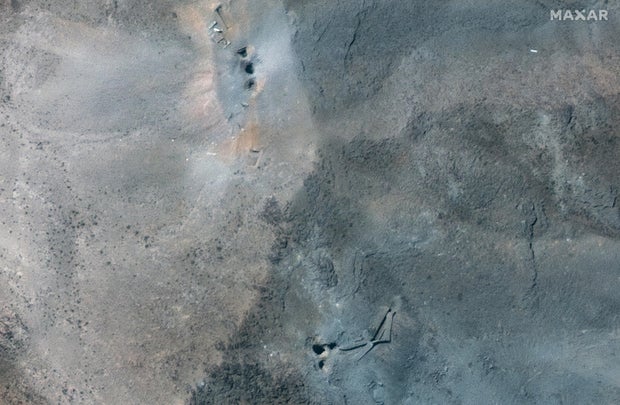
Additionally, several of the tunnel entrances that lead to the underground facility appear blocked by dirt following the strikes.

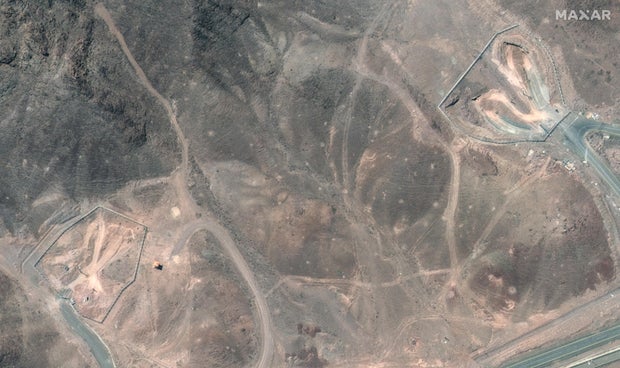
Asked at the briefing whether any of Iran’s nuclear capability remains, Caine said, “I think (battle damage assessment) is still pending, and it would be way too early for me to comment on what may or may not still be there.”
Iran has yet to offer a damage assessment of the site. The United Nations’ International Atomic Energy Agency said in a social media post that it had seen “no increase in off-site radiation levels” in the wake of the U.S. strikes.
Following U.S. attacks and further analysis, IAEA assessed extensive damage at Esfahan, including tunnel entrances; Fordow was also directly impacted; additional strikes at Natanz.
— IAEA – International Atomic Energy Agency ⚛️ (@iaeaorg) June 22, 2025
No off-site radiation increase reported: https://t.co/oUcKJa8jUC pic.twitter.com/d8JPsaMMlv
Craters, destroyed buildings in Isfahan and Natanz
At Isfahan, which was targeted by about a dozen Tomahawk missiles, satellite images from Sunday show extensive building damage across the facility, compared to images taken June 16. The Israeli military had also heavily bombed Isfahan in recent days
Grossi told the UN Security Council that affected buildings include some related to the uranium conversion process. Entrances to tunnels used for the storage of enriched material appear to have been hit, the IAEA director general said.

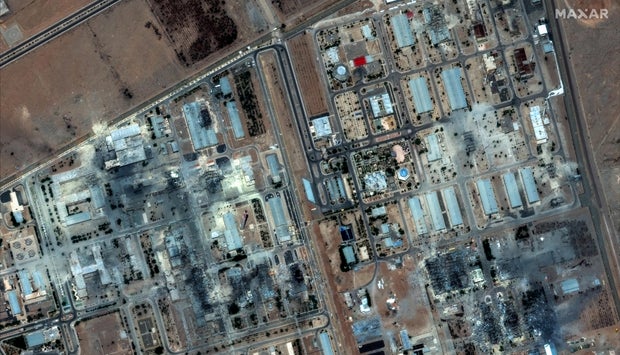
At the Natanz uranium enrichment facility, a satellite image captured Sunday by Maxar shows an approximately 5.5-meter diameter hole or crater in the dirt directly over part of the underground military complex.
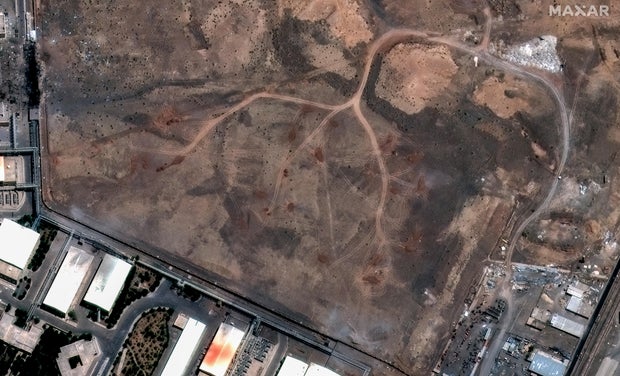
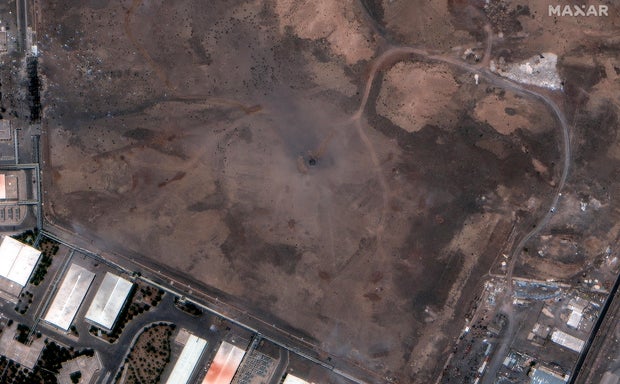
Natanz had been previously damaged by the first Israeli strikes on Iran on June 13.
Grossi confirmed Sunday that the fuel enrichment plant in Natanz had been hit again, with the U.S. confirming that it used ground-penetrating munitions. He said Iran has informed the nuclear watchdog there has been no increase in off-site radiation levels following the attacks. However, bombing nuclear facilities “could result in radioactive releases with grave consequence,” Grossi warned, urging “maximum restraint.”
Want to earn some extra money on the side? Buy PCPi Coin or Subscribe to VIP and get dividens monthly.
____
Associated Press, CNBC News, Fox News, and preCharge News contributed to this report.








